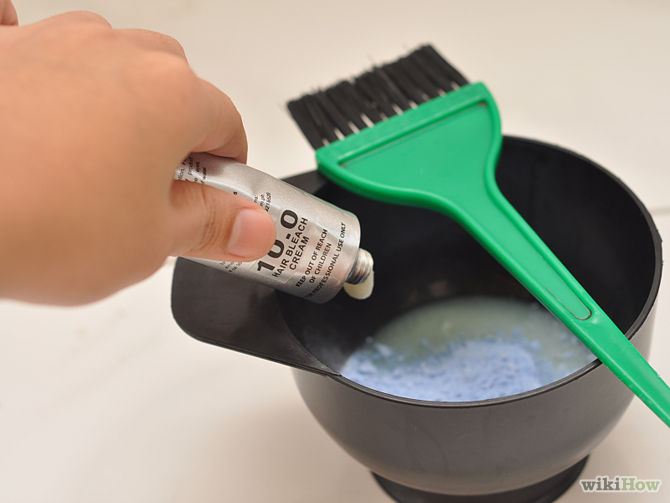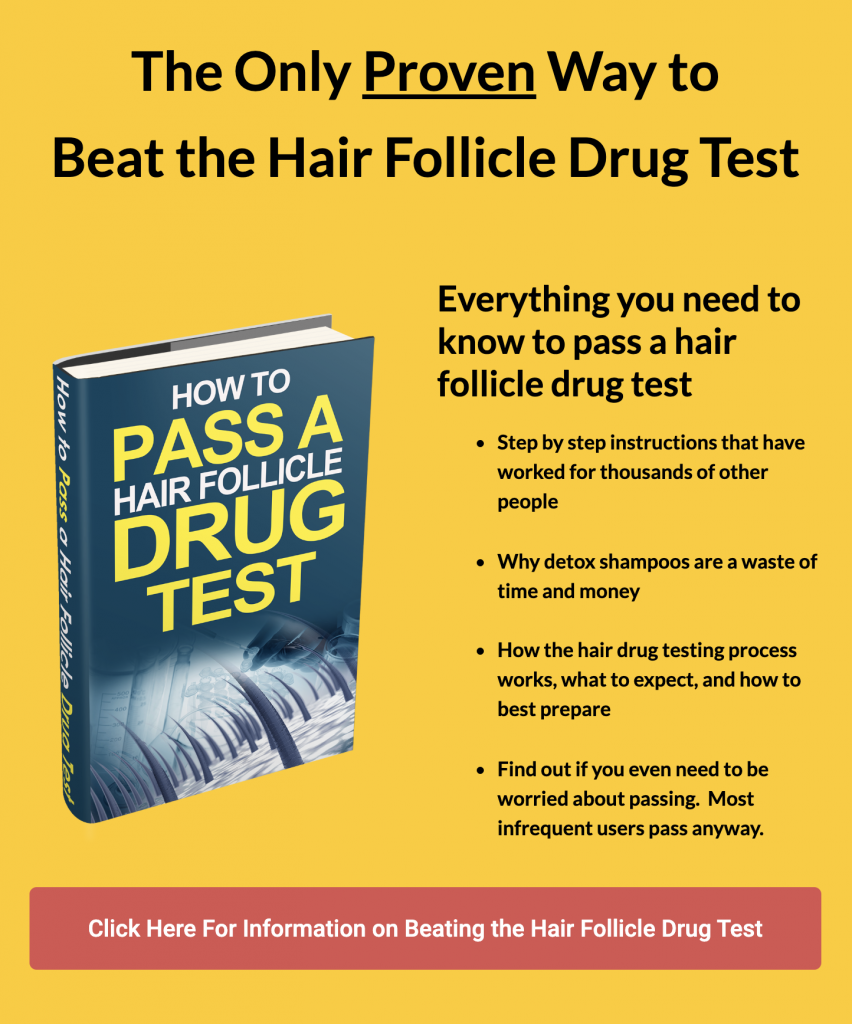One of the most frequently asked questions I get asked is “Can you pass a hair follicle drug test by bleaching your hair?” Actually, this is probably the only way you can pass a hair follicle drug test but it’s not as simple as going to the hair salon and asking them to give you a nice bleach job.
Most cosmetic bleachings attempt to protect your hair from excessive damage. In order to pass a hair follicle drug test you need to do some significant damage to the hair cuticle so there’s an obvious gap between a cosmetic bleach job and the type of bleaching that needs to happen in order to pass a drug test.

Learn How to Pass a Hair Follicle Drug Test
There is only one hair treatment method that has consistently produced "Passes" on the hair drug test and we want to show you how you can pass your test too.
This is one of the reasons drug testing companies tout that bleaching your hair won’t help you pass a drug test. They’re intentionally misdirecting people by talking about typical cosmetic bleaching. They’re also not being entirely honest either. The European Workplace Drug Testing Society published a report “Drug and Alcohol Testing in Hair, Collection and Analysis” which stated:
Every strong chemical, physical and mechanical influence could have harmful effects on the cuticle: perming, straightening, dyeing, bleaching, excessive washing, intensive illumination with ultraviolet radiation, excessive exposure to sunlight. Bleaching, blonding or lightening involve the irreversible destruction of melanin by oxidation, a partial or even complete degradation of melanin is possible. When strong bleach is used the physical properties of hair (e.g. a higher porosity) will be altered.
Hence cosmetic treatment like bleaching, dying and perming must be considered and accounted for pre- and post-analysis since it can reduce the drug concentration below the L.O.D. and hence cause false negative results.
The drug testing companies are fully aware that bleaching and dying your hair lowers drug concentrations. The problem is that regular cosmetic bleaching usually doesn’t lower the drug metabolite concentrations by enough to significantly impact the results of a frequent user who has accumulated a high concentration of residue drug metabolites.
Plus, admitting that bleaching and dying work would put them out of business. So they dismiss bleaching and dying in public to increase the fear factor and justify the cost of the tests to employers and others who are paying for the tests to be administered.
Can you imagine the can of worms this opens up for the drug testing labs and employers? First off, once the secret is out, everyone will just bleach their hair before a drug test and detection rates will fall. Even simple cosmetic bleaching will eliminate all of the borderline cases.
Then what happens when Steve in purchasing complains about gender discrimination because Betty in accounting bleaches her hair platinum blonde once a month and nobody says a word but just because Steve bleached and dyed his hair before a drug test he’s suspected of trying to beat the test? Employers will quit using hair follicle testing and go back to the much cheaper urine drug testing in order to avoid HR complaints and possible lawsuits.
So, the bottom line is that bleaching does work. If you suspect that you’re a borderline case, chances are that a cosmetic bleach and dye job will put you under the threshold.
The problem is that it’s difficult to know if you’re a borderline case without getting your own drug test done and knowing what your exact drug metabolite concentrations are.
Plus, if you’re not borderline (i.e. you’re fairly sure you’re well over the detectable limits) you need a more aggressive approach. Stronger bleach and dyes. You also need repeated treatments to get you below the level of detection (L.O.D).
The more aggressive methods can lower THC metabolite concentrations in your hair by anywhere from 30% – 60% per treatment. The Enzyme Linked Immunosorbent Assay (ELISA) threshold is 1.0 pg/mg. If you’re staring off with 3.0 pg/mg (a fairly heavy smoker), a 30% – 60% reduction still puts you over the limit. This is why multiple treatments are necessary.
Just to be conservative, let’s say that each treatment is reducing your THC metabolites by 30%. Starting at 3.0 would look like this:
Start: 3.0 pg/mg
After first treatment: 2.1 pg/mg
After second treatment: 1.47 pg/mg
After third treatment: 1.03 pg/mg
While 1.03 pg/mg still exceeds the L.O.D, not all three treatments can be administered in a single day so some time will have passed and some clean hair growth will have occurred (assuming you quit using once you find out you will need to submit to a hair follicle drug test).
Also, it is reasonable to assume that the more treatments the greater the effectiveness of the elimination of metabolites. Each treatment will do damage to the hair and this is exactly what is needed to eliminate THC metabolites. So a second treatment, already acting on previously damaged hair would inflict further damage and, in theory, eliminate more than THC metabolites than the original.
It also demonstrates why drug companies claim that bleaching won’t help you pass a drug test. If a normal cosmetic bleaching reduces the THC metabolites deposited in your hair by 20%, and assuming you have a single treatment, you’re still going to be way over the L.O.D (at 2.4 pg/mg).
If you would like to find out more about bleaching as a way to beat the hair follicle drug test, please consider buying my eBook where I give step by step directions on how to perform a full treatment schedule, bleach concentrations, and other things you can do that assist in eliminating THC metabolites from your hair.

